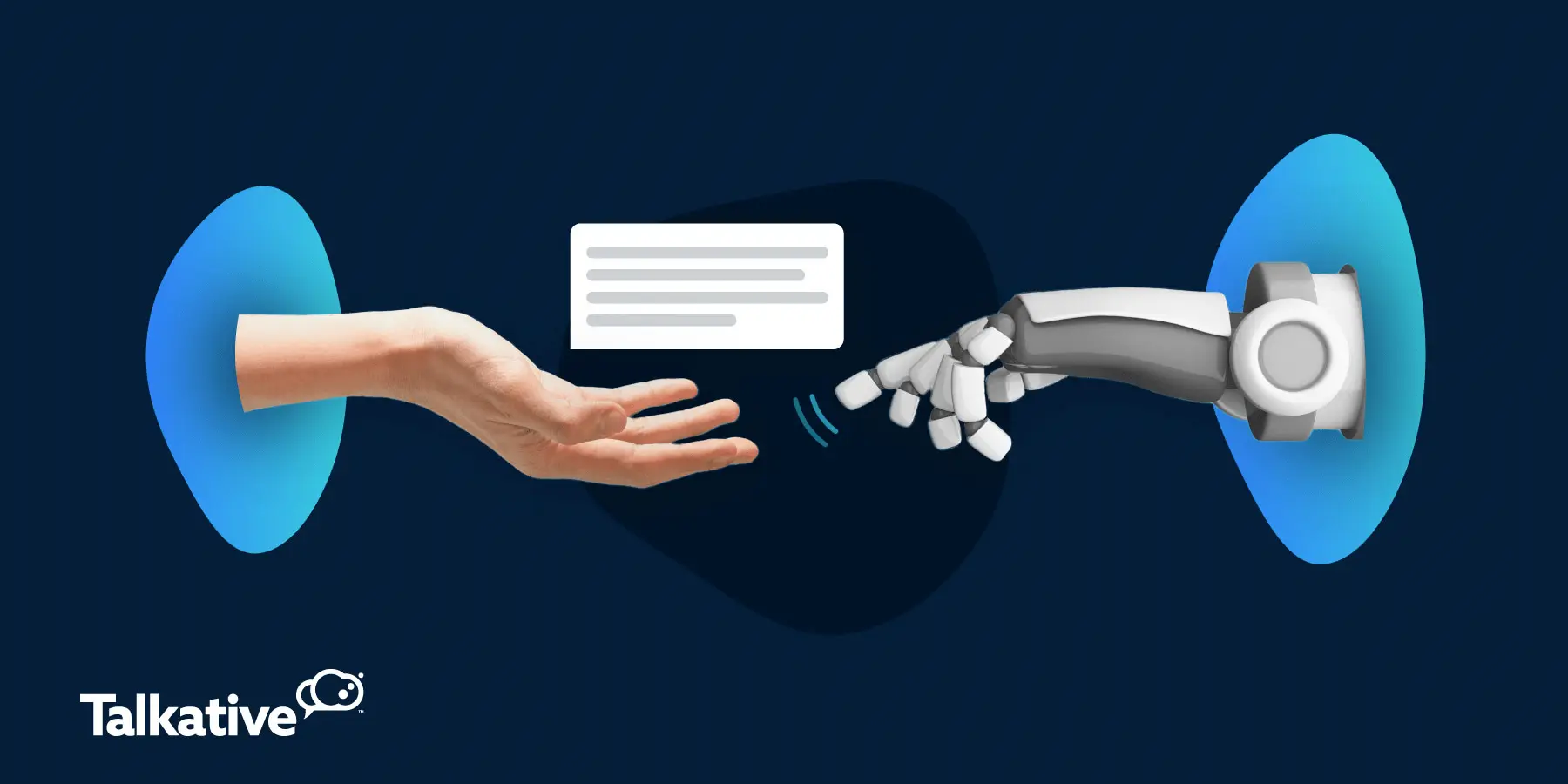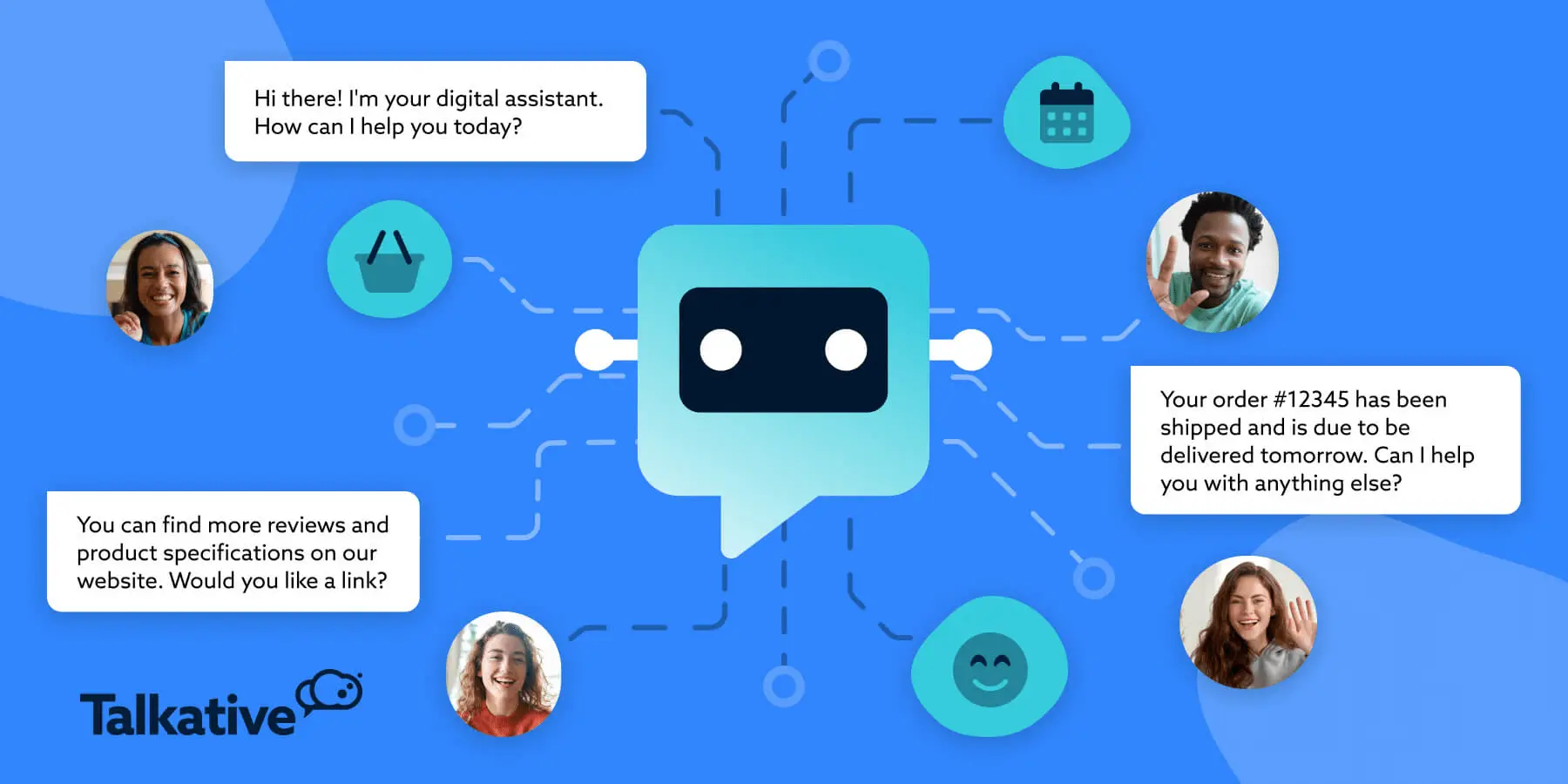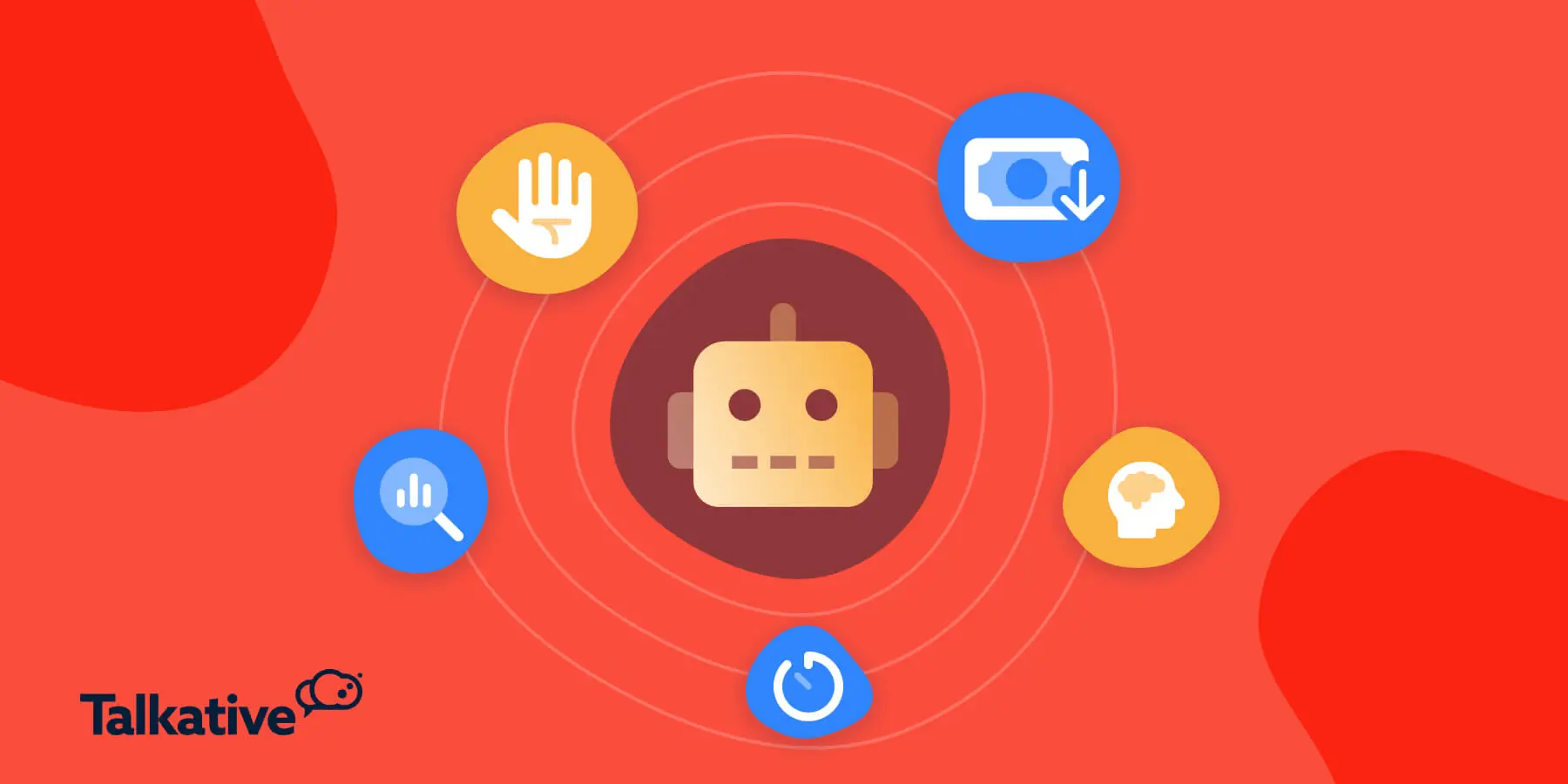[Updated October 2024 to include OpenAI's latest models: o1-preview and o1-mini]
In 2022, OpenAI took the world by storm with the launch of ChatGPT-3.5.
Since then, many industry leaders have realised this technology's potential to improve customer experiences and operational efficiency.
OpenAI’s latest releases, GPT-4 Turbo and GPT-4o, have further advanced the platform’s capabilities.
Despite this, the predecessor model (GPT-3.5) continues to be widely used by businesses and consumers alike.
This raises a number of questions...
How exactly do GPT-4 models differ from ChatGPT-3.5?
What new capabilities does GPT-4 bring to the table?
And which model is best for your business needs and customer service goals?
These are the questions we’ll aim to answer in this guide. We’ll cover:
- What is ChatGPT and how does it work?
- A breakdown of the differences between ChatGPT-4 and ChatGPT-3.5
- New bonus section: OpenAI o1-preview and o1-mini
- Using GPT models to improve customer service
TL;DR:
ChatGPT-3.5 vs ChatGPT-4, GPT-4 Turbo, and GPT-4o: Key Differences...
- Size & Architecture: GPT-4, with around 1 trillion parameters, is much larger and more complex than GPT-3.5's 175 billion, leading to better contextual understanding and response coherence. Variants like GPT-4 Turbo and GPT-4o are even more efficient.
- Training Dataset: GPT-4 models use a larger, more diverse dataset, improving their ability to handle complex requests and generate accurate responses. Enhanced training and quality assurance processes contribute to superior performance.
- Capabilities: GPT-4 can process longer inputs (up to 128,000 tokens) and has better contextual understanding and accuracy. It also includes multimodal capabilities, handling text, images, audio, and video.
- Bias & Safety: GPT-4 employs advanced techniques to reduce bias and enhance safety, making it 82% less likely to generate disallowed content compared to GPT-3.5.
- User Experience: GPT-4 offers a more human-like, seamless experience with improved context retention and response depth. GPT-4 Turbo and GPT-4o enhance these further, but GPT-3.5 remains faster and more cost-effective.

What is ChatGPT?
ChatGPT is a powerful conversational AI agent built by OpenAI.
It’s designed to understand user inputs and generate intelligent, human-like outputs in response.
In addition to AI customer service, this technology facilitates many use cases, including...
- Content creation/editing
- Creative writing
- Communications
- Translating languages
- Software code generation and debugging
- Data analysis
- Offering information/advice on countless topics (e.g. general knowledge, current events, education, technology, health, arts/literature, finance, travel, education, etc.).
It can also be tailored with custom AI prompts so that its outputs align with a specific user's needs or use cases more closely.
The versatility of ChatGPT and its many applications have made it extremely popular.
Recent data indicates that it has over 180.5 million users, and the OpenAI website attracts 1.6 billion visits per month.

How does ChatGPT work?
ChatGPT was developed using the GPT (Generative Pre-trained Transformers) Large Language Model.
This leverages a deep learning architecture known as Transformer, which allows the AI model to process and generate text.
It works by predicting the next word in a sentence based on the context provided by previous words.
As a result, ChatGPT can engage in coherent and contextually relevant conversations with users.
This makes it a powerful tool for natural language understanding and generation.
Understanding Large Language Models (LLMs) is crucial to comprehending how ChatGPT functions.
LLMs are a subset of artificial intelligence that focuses on processing and producing language.
They leverage a number of AI technologies and techniques, including:
- Natural Language Processing (NLP)
- Conversational AI
- Generative AI (GenAI)
- Machine Learning models
LLMs are trained using vast amounts of data and diverse text sources.
This training process enables LLMs to develop a broad understanding of language usage and patterns.
The power of LLMs lies in their ability to generalise from their training data to new, unseen text inputs.
It’s what makes them capable of generating human-like responses that are relevant and contextually appropriate.
It's also what makes them a powerful solution for customer service use cases and interactions.

ChatGPT-4 vs GPT-3.5: A breakdown of the differences
Now that we’ve covered the basics of ChatGPT and LLMs, let’s explore the key differences between GPT models.
Below, we’ll provide a comparative analysis of GPT-3.5 vs GPT-4, GPT-4 Turbo, and GPT-4o.
1. Model size & architecture
The underlying architecture of GPT-4 and GPT-3.5 differs vastly in size and complexity.
GPT-3.5’s architecture comprises 175 billion parameters, whereas GPT-4 is much larger.
The exact number of parameters for GPT-4 has not been disclosed, but it’s rumoured to be around 1 trillion.
Parameters are the elements within the model that are adjusted during training to boost performance.
A higher number of parameters means the model can learn more complex patterns and nuances.
In addition to more parameters, GPT-4 also boasts a more sophisticated Transformer architecture compared to GPT-3.5.
This improves efficiency, allowing for wider contextual understanding and more sophisticated training techniques.
It also results in more coherent and relevant responses, especially during lengthy conversations.
Further advancing on these improvements are ChatGPT-4 Turbo and ChatGPT-4o.
Specific details about the parameter count and architectural tweaks for the newer variants aren’t publicly disclosed.
However, we do know that they’re engineered to be more efficient than the standard GPT-4 model.
These advancements make GPT-4 and its variants ideal for handling nuanced instructions and detailed text generation.
That said, the GPT-3.5 model is not redundant or without its strengths.
GPT-3.5’s smaller and less complex architecture means that it has a faster processing speed and lower latency.
It’s also cheaper to implement, run, and maintain compared to the GPT-4 models.

2. Training dataset
Training data refers to the information/content an AI model is exposed to during the development process.
It’s crucial because the quality of training data directly impacts capabilities and performance.
The training dataset for GPT-4 models differs from that of GPT-3.5 in various aspects…
Volume & diversity
ChatGPT-4’s training dataset is significantly larger and more varied than earlier models.
This diverse dataset covers a broader scope of knowledge, topics, sources, and formats.
It also includes more languages, technical domains, and cultural contexts.
This means GPT-4 models are better equipped to handle complex requests and a wider range of queries.
GPT-4 variants can also generate responses that better reflect the varied perspectives and contexts found across Internet data.
Quality
The quality assurance for GPT-4 models is much more rigorous than for GPT-3.5.
Advanced filtering techniques are used to optimise and refine the training dataset for GPT-4 variants.
This enables OpenAI to eliminate as much misinformation and harmful content as possible.
The process also involves removing low-quality content, ensuring a better representation of information.
The end result is a cleaner and more reliable dataset, improving ChatGPT’s ability to generate trustworthy and accurate outputs.
In fact, GPT-4 models are 40% more likely to produce factually correct responses than GPT-3.5.
Training techniques
While the exact details aren’t public knowledge, GPT-4 models benefit from superior training methods.
These techniques likely include more sophisticated algorithms, optimisation strategies, and architectural enhancements.
Training improvements allow AI models to learn more efficiently and effectively from data.
It means GPT-4 variants have the upper hand in understanding and processing information/inputs.
Feedback-based refinements
GPT-4’s dataset incorporates extensive feedback and lessons learned from the usage of GPT-3.5.
It means GPT-4 variants can address and improve upon specific issues identified in the earlier model.
This has led to improvements in ChatGPT’s response coherence, relevance, and factual accuracy.
Additionally, GPT-4’s Turbo variant extended the learning cutoff date from September 2021 to December 2023.
This gives ChatGPT access to more recent data - leading to improved performance and accuracy.
In summary, the dataset and training processes for GPT-4 models have been significantly enhanced to produce a more capable and refined model than GPT-3.5.
For this reason, GPT-4 variants excel in meeting user expectations and generating high-quality outputs.

3. Capabilities
Capabilities are another factor that highlights the differences between GPT-3.5 and GPT-4 models.
The capabilities of GPT-3.5 vs GPT-4 vary in the following ways...
Capacity
The capacity of GPT models is measured in tokens, which can be thought of as pieces of words.
Each version of ChatGPT has a different maximum token limit.
This limit determines the length of text that the model can process in a single input.
For GPT-3.5, the input limit is 4,096 tokens, equating to around 3,072 words.
GPT-4 offers a significantly larger capacity of 8,192 tokens, roughly equivalent to 6,144 words.
The GPT-4 Turbo and GPT-4o variants take this even further.
These newer models allow up to 128,000 tokens (approx 96,000 words) in a single input.
This extended capacity means that GPT-4 models can accommodate much longer inputs than GPT-3.5.
Contextual understanding
GPT-4 variants exhibit a superior ability to maintain context throughout interactions.
This is particularly evident in longer conversations, where the AI needs to remember and refer to previous exchanges.
The improved contextual understanding is a result of the model’s upgraded training techniques and architecture.
It means GPT-4 models can engage in more natural, coherent, and extended dialogues than GPT-3.5.
Knowledge & accuracy
Due to improved training data, GPT-4 variants offer better knowledge and accuracy in their responses.
The optimised dataset allows GPT-4 models to draw from a broader pool of information, resulting in more comprehensive and up-to-date answers.
GPT-4 can also provide more precise information and handle a wider range of topics competently.
This includes specialised and niche areas that GPT-3.5 might struggle with.
Additionally, GPT-4’s refined data filtering processes reduce the likelihood of errors and misinformation.
This makes the GPT-4 versions a more valuable resource for ChatGPT users seeking reliable and detailed information.
Multimodality
A notable advancement of GPT-4 models over GPT-3.5 is their multimodal capabilities.
Unlike GPT-3.5, which is limited to text input only, GPT-4 Turbo can process visual data.
This allows it to interpret and generate responses based on images as well as text.
With this capability, ChatGPT can generate detailed descriptions of any image.
It can also answer questions about an image’s content, e.g. “What species of animal is shown in this picture?”
GPT-4o has advanced these capabilities further with the ability to process text, audio, images, video. and even file formats like word documents or interactive PDFs.
This functionality opens up new possibilities for applications that require multimedia data, making GPT-4 models far more versatile than GPT-3.5.

4. Bias & safety
Bias and safety remain critical considerations in the development of LLMs.
This issue stems from the vast training datasets, which often contain inherent bias or unethical content.
GPT-4 versions incorporate sophisticated techniques for mitigating this and ensuring safer interactions.
These include improved filtering and moderation systems to reduce the likelihood of generating harmful or biased content.
As a result, GPT-4 is 82% less likely to respond to requests for disallowed content than GPT-3.5.
GPT-4 variants also benefit from continuous feedback loops where user reports of bias help refine the model over time.
While all GPT models strive to minimise bias and ensure user safety, GPT-4 represents a step forward in creating a more equitable and secure AI system.

5. User experience
The differences between GPT-3.5 and GPT-4 create variations in the user experience.
ChatGPT-3.5 faces limitations in context retention and the depth of its responses.
This makes it less consistent in maintaining long-term coherence across conversations.
It’s also more likely to produce outputs that are less nuanced, inaccurate, or lacking in sophistication.
In contrast, GPT-4 marked a substantial improvement in these areas.
The model’s increased ability to maintain context makes for a more humanised and seamless experience.
The depth, precision, and reliability of responses also increase with GPT-4.
This is especially apparent in specialised fields such as scientific queries, technical explanations, and creative writing.
GPT-4 Turbo and GPT-4o build on the strengths of GPT-4 by fine-tuning its performance.
These newer models retain GPT-4’s enhanced capabilities but are tailored to deliver the benefits more efficiently.
They also offer a more immersive user experience with the addition of multimodal functionality.
However, despite these advancements, GPT-3.5 still wins when it comes to speed.
Due to its simpler architecture and lower computational requirements, users experience faster response times with GPT-3.5.
And, although GPT-4 Turbo and GPT-4o are cheaper to run than the standard GPT-4, GPT-3.5 remains the most cost-effective option.

Bonus section: OpenAI o1-preview and o1-mini
In September 2024, OpenAI introduced two new models: o1-preview and o1-mini.
These models are designed to spend more time "thinking" before responding to requests.
As a result, they offer deeper reasoning and problem-solving abilities compared to earlier models.
This makes them more adept at complex tasks such as applications in science, coding, and mathematics.
o1-preview handles requests with advanced reasoning, offering optimal performance and accuracy.
This makes it ideal for more demanding and complex tasks or queries.
o1-mini is also a reasoning model but a smaller one, designed for maximum efficiency.
While it's faster and more cost-effective, it's not as advanced in deep reasoning capabilities as o1-preview.
Overall, these new models offer a compelling balance between speed, cost, and enhanced reasoning.
This makes them strong contenders for businesses that require high-performance AI for real-time scenarios and intricate inquiries.

Using GPT LLMs for customer support
The capabilities of GPT models make them excellent tools for automated customer service.
It’s why many customer service platforms leverage OpenAI to power their AI features.
Talkative, for example, integrates with OpenAI to offer a variety of AI solutions for customer support.
For the following features, Talkative users can choose between multiple LLMs…
AI Knowledge Bases
AI Knowledge bases transform the way agents answer customer queries during live chat conversations.
They work by allowing you to create AI knowledge bases by using web page URLs or file-based content.
Once set up, the AI uses your knowledge base dataset and the interaction context to generate relevant response suggestions for each customer message.
Agents can choose to instantly send the suggestion back to the customer or edit it themselves before sending it.

AI Agent Copilot
The above knowledge base response suggestions are one element of our AI Agent Copilot suite.
Powered by OpenAI and your knowledge base datasets, our AI copilot is a set of tools designed to improve response speed and quality.
In addition to response suggestions, Agent Copilot also provides Navi.
Navi is an internal-facing chatbot that acts as a personal AI assistant for agents.
Navi answers agent questions using the current interaction context and your knowledge base content.
This saves a lot of time by eliminating the need for agents to manually search for information.
Lastly, Agent Copilot also offers an AI Autocomplete capability.
This feature predicts and completes agent messages, decreasing typing time and facilitating faster replies.

AI chatbots
AI chatbots and voicebots have become a cornerstone of the digital customer experience.
They work by automating a wide range of customer service interactions and tasks, offering benefits like:
- 24/7 availability
- Instant responses
- Advanced customer self-service
- Reduced agent workloads
- Increased efficiency
Like our AI Agent Copilot, Talkative’s GenAI Chatbot works using OpenAI, leveraging generative AI technology alongside your knowledge bases.
By leveraging your knowledge base datasets and GPT models, this bot can answer countless questions about your business, products, and services.
This allows it to act as an intelligent virtual assistant for your customers.
Our GenAI bot can also initiate seamless hand-offs to agents whenever necessary.
This means you can offer exceptional automated customer support and self-service…
Without stripping away the human touch.
The takeaway: Which GPT model is best for customer service?
Your business needs, goals, and budget dictate whether GPT-4 or GPT-3.5 is the best choice.
GPT-4 offers AI systems that are more sophisticated and intelligent than GPT-3.5.
This means that features powered by GPT-4 variants can handle more complex customer conversations and tasks.
However, these benefits come at a cost.
Response times for GPT-4 can be noticeably slower than the speed of GPT-3.5.
This lag may negatively impact the user experience for your customers and support agents.
GPT-4 is also significantly more costly compared to GPT-3.5.
Moreover, although GPT-3.5 is less advanced, it’s still a powerful AI system capable of accommodating many B2C use cases.
OpenAI’s newest models, o1-preview and o1-mini, offer additional options that balance performance and cost.
o1-preview is designed for advanced reasoning, making it well-suited for complex use cases that require a higher level of problem-solving.
On the other hand, o1-mini is a more lightweight model, offering rapid reasoning at a lower cost.
This makes it a good option for high-traffic applications where simplicity and speed are the priority.
Fortunately, the Talkative solution supports GPT-4 variants, GPT-3.5, and now the o1 models too.
This gives you the flexibility to try them all, ensuring you make the right choice for your business.
In addition to chatbots and AI solutions, Talkative offers a suite of customer contact channels and capabilities.
These include live chat, web calling, video chat, cobrowse, messaging, integrations, and more.
You can even pick and choose the channels/features/integrations you want, allowing you to tailor our platform to fit your needs.
Want to learn more? Book a demo with Talkative today, and check out our interactive product tour.

.png)

